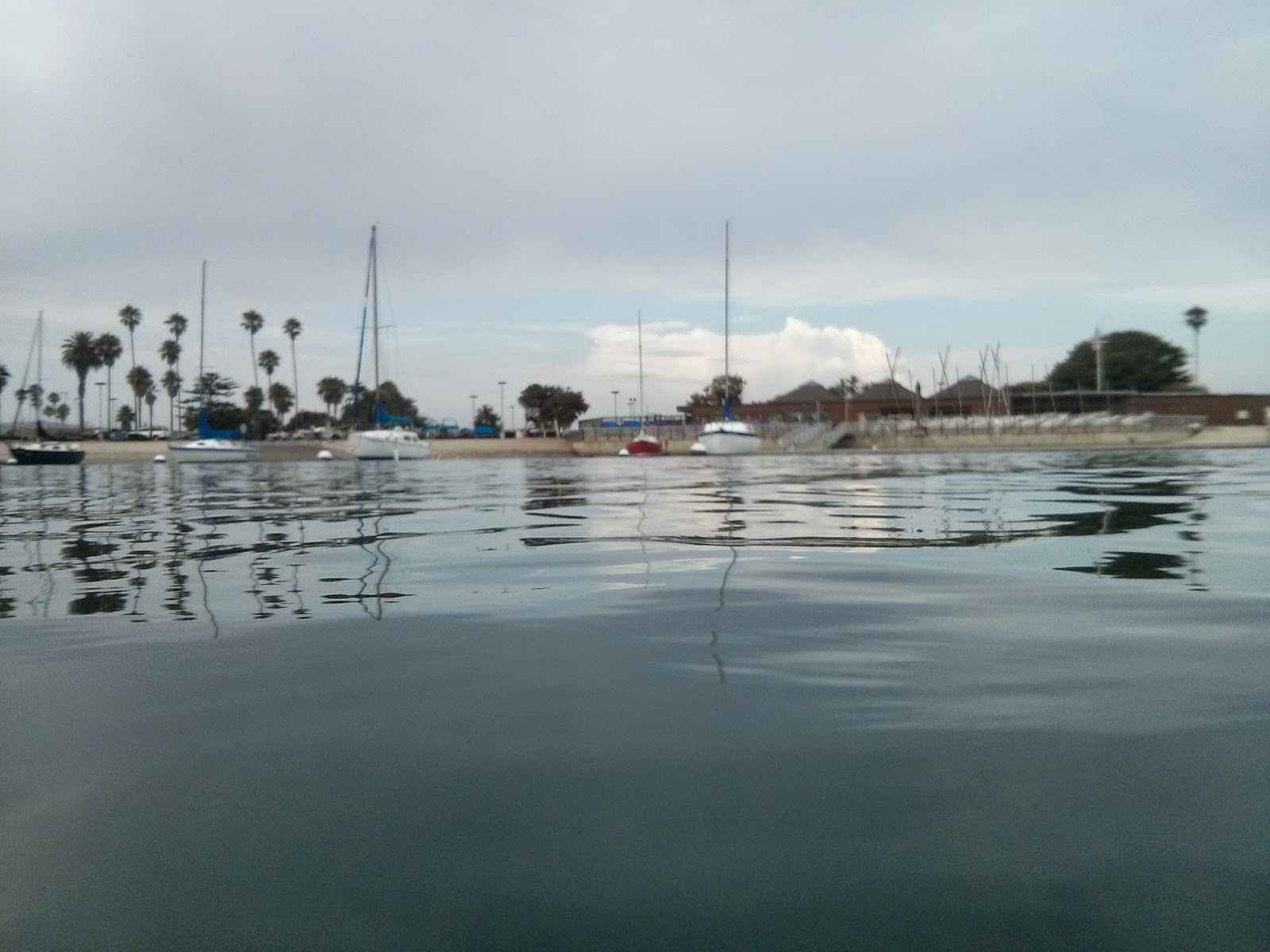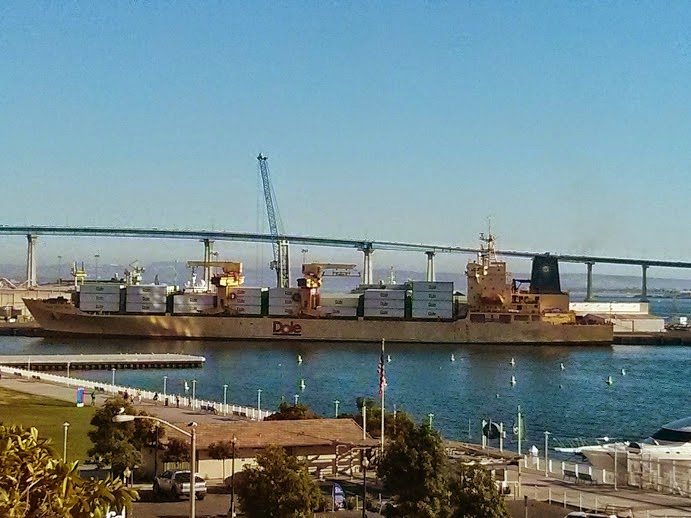San Diego has decided that it is going to make a firm commitment to the global economy. An initiative of 30+ companies, San Diego Regional Economic Development Corporation, UC San Diego and the City of San Diego want to expand growth opportunities in the area by creating more export opportunities. Those export opportunities result in higher wages and more jobs but will rely heavily on win-win strategic outcomes.
Mayor Kevin Faulconer describes the Going Global initiative as "Opportunities and innovation abound in San Diego and it's time to
tell the world (1)." The goal appears to be about getting products out of San Diego and into the global market while drawing investment into the region to capitalize on the core competencies of life sciences, blue technology and cyber knowledge.
According to the Go Global San Diego initiative San Diego is the 17th largest U.S. metro city, ranks 61st in terms of export intensity and 49th in terms of foreign-owned firms (2). San Diego has not fully capitalized on its inherent intellectual and human capital skills. The resources of many of the businesses that have global potential could be put toward exportation.
According to the Go Global San Diego site they will do this through a number of broad strategies:
-Catalyze growth of advanced industries.
-Drive Innovation through Talent: strengthen the workforce of today, deepen the workforce of the future.
-Realize CaliBaja’s potential through connections with priority and emerging markets.
-Mainstream global activity as a key component of regional business retention and expansion efforts.
-Maximize infrastructure assets.
The advantages of focusing on advanced industries is that they offer an opportunity to tap into a fast growing markets that spur additional investment. They also rely on a broad base of knowledge that supports medium and small businesses in the area. Wages are likewise higher in advanced industries raising the standard of living for local employees.
To truly do this well means the area will need to develop a brand that can sell the city as both a pro-business investment mecca and as a place where the quality of living is high. Local government should seek to draw in public and private stakeholders while ensuring decisions are based on bi-partisan strategic logic that creates the most winners. No need to create fights where no benefits are to be found.
There are advantages to getting everyone on the same page that isn't found in many cities across the country. When people can formulate a shared image of a city that helps them draw their self-interest the system becomes much more efficient through thousands of small actions aligned around that image. This will require not only business to succeed but also foster skill based income growth of motivated employees. Economic development that creates win-win outcomes will find support among investors while reducing inherent risks associated with uncertainty in regulations, labor allocation, governance, and socio-political turmoil.
You can read more at http://www.sandiegobusiness.org/goglobalsandiego
The blog discusses current affairs and development of national economic and social health through unique idea generation. Consider the blog a type of thought experiment where ideas are generated to be pondered but should never be considered definitive as a final conclusion. It is just a pathway to understanding and one may equally reject as accept ideas as theoretical dribble. New perspectives, new opportunities, for a new generation. “The price of freedom is eternal vigilance.”—Thomas Jefferson
Showing posts with label export economy. Show all posts
Showing posts with label export economy. Show all posts
Friday, March 13, 2015
Thursday, October 9, 2014
Can the U.S. Be an Export Nation in a Difficult International Economy?
The IMF says the global economy will grow slower than
expected this year while another recent announcement states that China superseded the U.S. in terms of purchasing power this year. Both are game
changing events in what appears to be a long played out economic drama. Even
though the news is not positive it does provide an opportunity for the U.S. to
focus on improving its infrastructure to lower costs and retool for better managing
international markets.
Slower International Economic Growth:
Growth in advanced economies and emerging economies are
widely different. Advanced economies should experience a 1.8% growth rate this
year and a 2.3% growth rate in 2015. Emerging economies are expected to have a
higher rate of 4.4% based upon their riskier investment portfolios. Companies
are attracted to the cheaper and more lucrative emerging economies for
new investments.
The IMF argues that one of the difficult challenges facing
economies is the ability of countries to enact reform and change to improve
upon their competitive positions. Countries should select which changes are
needed and beneficial and then move down the path of change to make things
happen. Political capital and the ability to share objectives will naturally
have an impact on the success of reform efforts.
Chinese Wealth and Influence:
The IMF states that China’s economy is larger than the U.S.
in terms of purchasing power (1).
China has surpassed the U.S. on purchasing power parity (PPP) meaning that once
the Gross Domestic Process (GDP) is adjusted the Chinese have significant purchasing
strength in the global market making them more influential than in the past. They
have become a direct competitor and market changer.
National wealth creates influence among business
stakeholders. When national wealth is high countries are able to better bargain
for deals, influence international stakeholders, and obtain the resources
needed to adjust and be more innovative. As China rises on the international
scene a new alternative takes shape which becomes viable for nations seeking
the best deal between two large economic countries (U.S. and China).
Needed Improvements:
A slower international economy and a more powerful China is
not the end of the game. It provides an opportunity for the U.S. to direct its
efforts toward implementing its own growth oriented strategies to draw
investments and improve the overall economic functioning of the nation. When
difficulties arise decision-makers are encouraged to put down petty differences
and focus on solutions through collaborative problem-solving.
Economic hubs act similar to emerging markets but have the
additional benefit of being within a more stable national economy. Their growth
potential as a localized entity is higher than national rates but can also influence
those national rates. Emerging technology and manufacturing hubs are prime
examples of flush investment and growth opportunities that have not been fully explored.
Within the U.S. there are examples of hubs that developed organically
through like-minded stakeholders. Understand where these hubs are located,
encouraging mutual development within these hubs, and creating awareness of
investment opportunities has a long-tail impact on the national economy. As hub
members become more innovative they will naturally export products and raise
their income opportunities by drawing in more investment interest to feed their
growth.
The point between A and Z has many stops and twists along
the path. At times we have become our own worst enemies in the sense that other
considerations beyond the health of the nation regularly take precedence. We
must only look at the political spectrum to see this distraction at work. Americans desire employment opportunities and this comes through building
ground-based products and services that have international penetration.
Government should move upwards in its development to lower costs, empower local
economies (i.e. hubs and clusters), reduce debt, improve infrastructure (i.e.
how hubs interact on a national level) and focus on founding fundamental
principles that encourage basic human motivation.
Wednesday, March 19, 2014
How Does Information Networking Create an Export Region?
Export driven economies fuel themselves through an
octane boost of information. Information makes their way into opportunity finding,
employment, and development. With the right methods of information transference
regions can further develop their export driving economies by understanding how
innovation fulfills demand-side and supply-side economics. Paul McPhee (2012)
explores innovation strategy information spillover contributions as an important
catalyst in simulating exports and employment.
Local development exists within a
national context. Local stakeholders and business members work together to
create development. Local networks and supply chains also rely on greater
information links in national networks to be successful (Bathelt, 2005). In other words, there exists the tighter
information transference within local networks and wider networks within the
nation. Even though the author doesn’t state this it can also include
information and resource vines throughout the globe.
This is demonstrated by
international organizations that seek investment locations that have assets,
organizational and institutional structures that support innovation information
that fosters development (Paniccia, 2002).
As a bounded rationality such organizations draw in this information to
create new products and services that have market relevancy. Without the
information sources full development is not possible due to a lack of
development feed.
We can find a number of examples
within the market. In Australia clusters formed from networks of regionally
based firms within the wine, fishing, film, education, and tourism industries
that collaborate and innovate collectively and individually through alliance, commissions,
federations, and associations (Roberts and Enright, 2004). Each industry has the opportunity to work
with other industries in both the local setting as well as the national setting
to create new products and services. Local clusters exist within a wider national
and international context.
The author found that information
transference fostered exportation of products and services. A process of
increasing the sourcing, generation, transferring, and sharing of information
within regional networks is necessary to increase export related employment.
This information is used for mutual development that impacts demand-side and
then export-side growth. When
information transference speeds up the opportunities from growth and exportation
also increase and this can lead to higher levels of regional employment.
Comment: The study lends support
to the concept that tighter formations of economic vines exist in clusters and
these clusters are woven into regional hubs that are connected to other hubs
both within a nation as well as across the globe. The success of local
economies is based in the ability to quickly and easily transfer information
and resources through their economic hubs. These hubs use their resources to create newer and better products.
Bathelt, H. (2005) Cluster
relations in the media industry: Exploring the ‘distanced neighbour’ paradox in
Leipzig. Regional Studies, 39, pp. 105-127.
McPhee, P. (2012). Export driven regional
development: a comparison of policies based on tiberi-vipraio-hodgkinson
innovation strategies and networked information flows. Australasian Journal of Regional Studies, 18 (1).
Pannicia, I. (2002) Industrial
Districts: Evolution and Competitiveness in Italian Firms, Edwards Elgar,
Cheltenham
Roberts, B. H. and Enright, M.
(2004) Industry clusters in Australia: Recent trends and prospects. European
Planning Studies, 12(1), pp. 99-121.
Subscribe to:
Posts (Atom)

